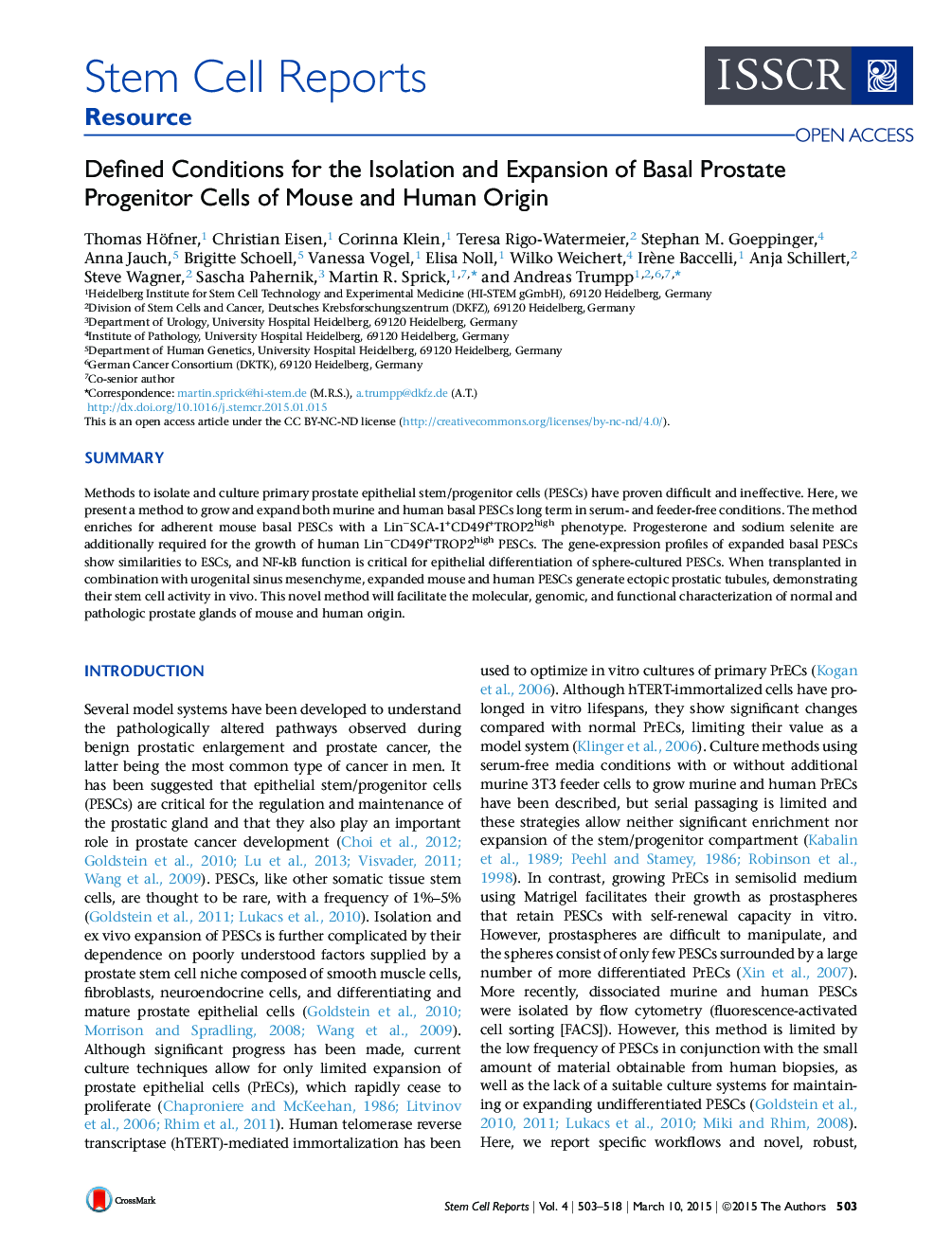| Article ID | Journal | Published Year | Pages | File Type |
|---|---|---|---|---|
| 2093783 | Stem Cell Reports | 2015 | 16 Pages |
•Basal prostate epithelial stem/progenitor cells (PESCs) are expanded in vitro•Expanded PESCs can differentiate into glandular structures in vitro and in vivo•A surface-marker screen identifies marker candidates for prostate basal stem cells•Gene-expression analysis shows a role of NF-kB signaling in PESC differentiation
SummaryMethods to isolate and culture primary prostate epithelial stem/progenitor cells (PESCs) have proven difficult and ineffective. Here, we present a method to grow and expand both murine and human basal PESCs long term in serum- and feeder-free conditions. The method enriches for adherent mouse basal PESCs with a Lin−SCA-1+CD49f+TROP2high phenotype. Progesterone and sodium selenite are additionally required for the growth of human Lin−CD49f+TROP2high PESCs. The gene-expression profiles of expanded basal PESCs show similarities to ESCs, and NF-kB function is critical for epithelial differentiation of sphere-cultured PESCs. When transplanted in combination with urogenital sinus mesenchyme, expanded mouse and human PESCs generate ectopic prostatic tubules, demonstrating their stem cell activity in vivo. This novel method will facilitate the molecular, genomic, and functional characterization of normal and pathologic prostate glands of mouse and human origin.
